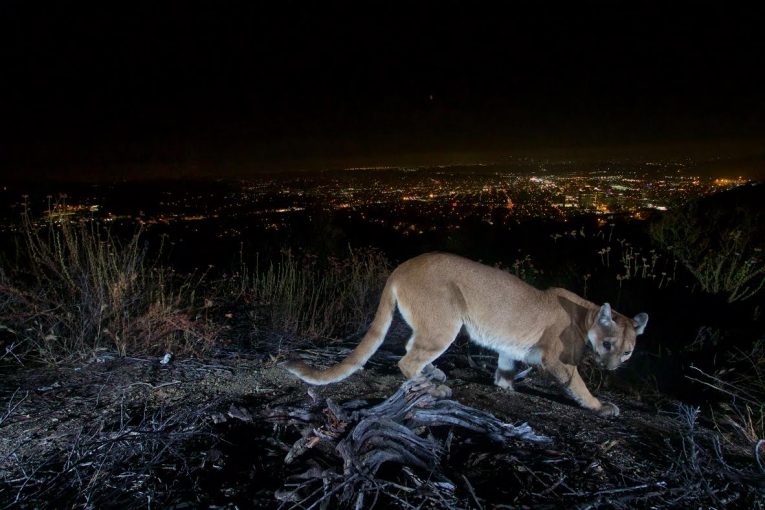

(From press release) In a welcome move to protect California’s mountain lions, the California Department of Fish and Wildlife (CDFW) expanded the boundary of the three strikes mountain lion depredation policy, effective February 13, 2020. Originally adopted in 2017, the policy requires landowners that have had pets or livestock at-tacked to first try non-lethal means to deter mountain lions from future attacks of their domestic animals. After the third strike, the landowner can request a lethal depredation permit from CDFW.
The policy change also requires a CDFW Response Guidance Team to review all mountain lion depreda-tion permit requests with involvement and final approval from the CDFW executive office.
Since the recent death of P56, one of the last remaining male lions in an area of the Santa Monica Moun-tains and the first lion killed under the three strikes policy, public and legislative outcry convinced CDFW that there is a need for an expanded boundary of protection and an executive authority to approve any requested lethal depredation.
“This action by CDFW shows its support for California’s desire to protect its lions, while also protecting the interests of livestock owners. It reflects the ongoing work of the Mountain Lion  Foundation, the Center for Biological Diversity, CDFW and the legislature to ensure the future of America’s lion,” added Bob McCoy, Chair of the Mountain Lion Foundation.
Foundation, the Center for Biological Diversity, CDFW and the legislature to ensure the future of America’s lion,” added Bob McCoy, Chair of the Mountain Lion Foundation.
The new boundary matches the boundary area mapped in a recently recommended California Endan-gered Species Act petition brought forth by the Mountain Lion Foundation, a Sacramento based non-profit and the Center for Biological Diversity. Current protections under California law couldn’t save P56, the first lion killed under the state’s three strikes law, yet there is now hope that P56 didn’t die in vain.
With the CDFW recommendation to accept the groups’ CESA petition that could potentially trigger a full review of the status of six mountain lion sub populations in central and southern California, and with the expansion of the three strikes policy’s geographic range, Californians have had their hope revitalized that something good come out of P56’s death.
“Without these protections, certain populations of California’s lion could disappear in little more than a decade, further eroding the gene pool and potentially sending these iconic cats one step closer to extinc-tion,” stated Debra Chase, CEO of the Mountain Lion Foundation. “This action shows that California, with some of the strongest protections for mountain lions in the nation, continues to serve as the model for other states.”





